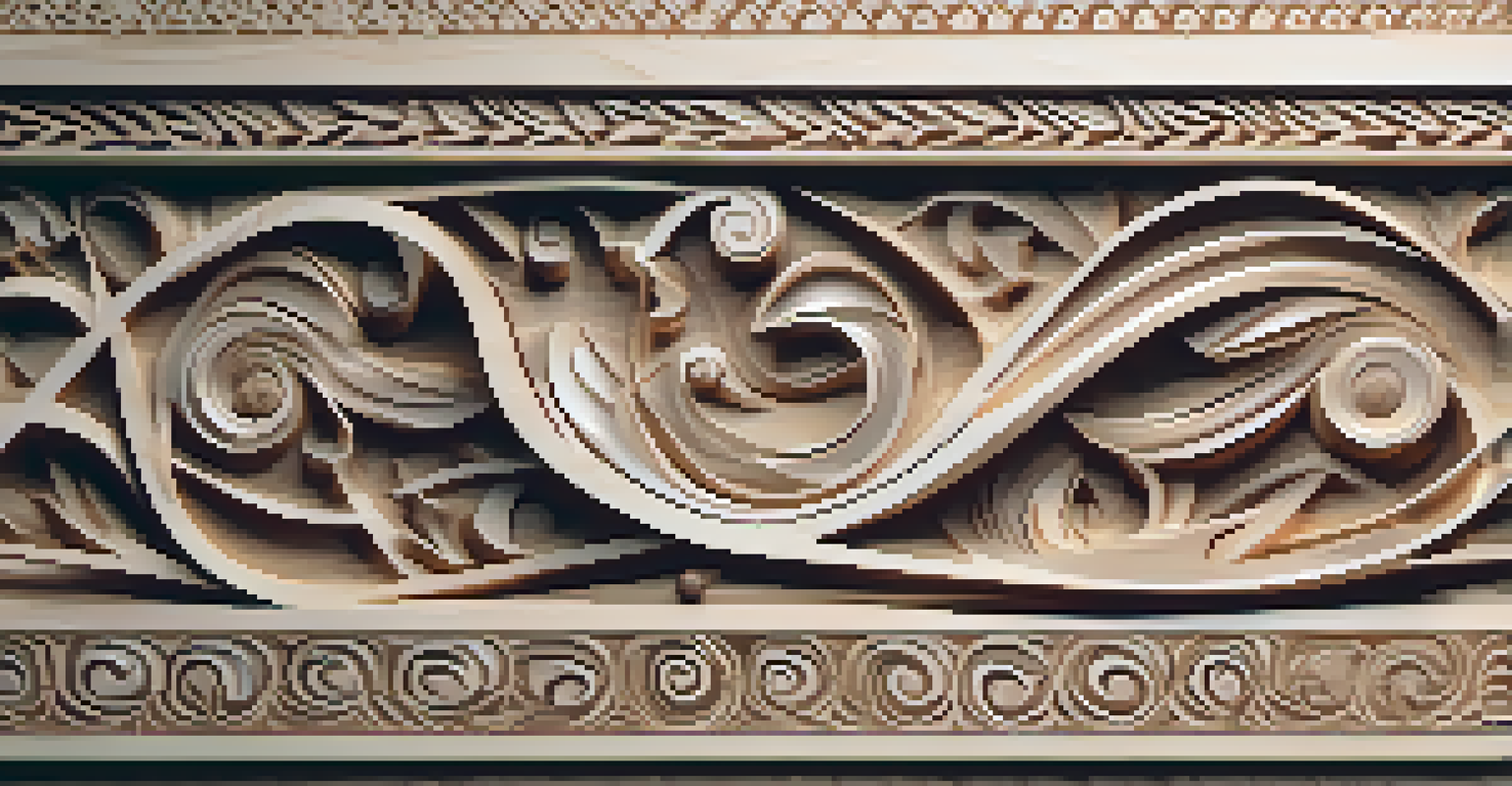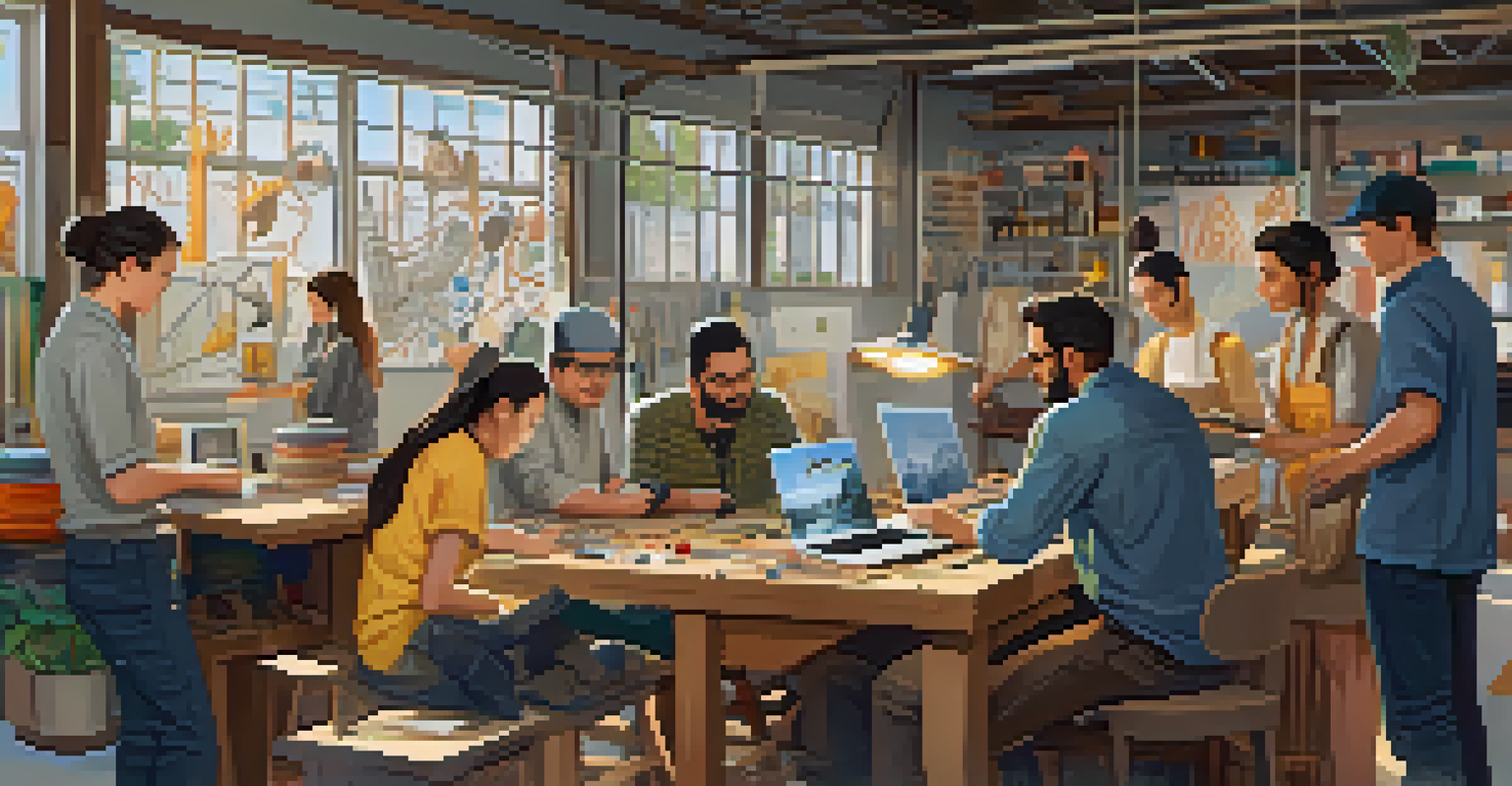The Impact of Digital Fabrication on Artisan Carving Skills

Understanding Digital Fabrication in Craftsmanship
Digital fabrication refers to the process of using computer-controlled tools to create physical objects. This technology encompasses methods like 3D printing, laser cutting, and CNC machining, allowing artisans to produce intricate designs with precision. By combining traditional craftsmanship with modern technology, digital fabrication opens new avenues for creativity and efficiency in the arts.
The future belongs to those who believe in the beauty of their dreams.
Artisans often rely on their hands and tools to shape materials, but digital fabrication offers a different approach. Imagine having a powerful assistant that can replicate your designs exactly, allowing for consistent quality and faster production. This combination of human skill and machine precision can elevate the quality of artisan work while keeping the craft relevant in today's fast-paced market.
However, the integration of these technologies raises questions about authenticity and the essence of craftsmanship. Many artisans fear that reliance on machines could dilute their skills or uniqueness. Yet, it’s essential to view digital fabrication as a tool that can enhance, rather than replace, traditional carving methods.
The Benefits of Digital Tools for Artisan Carving
One of the most significant advantages of digital fabrication is the ability to experiment without fear of wasting materials. For instance, an artisan could design a complex piece digitally, visualize it in 3D, and make adjustments before starting the actual work. This not only saves time but also reduces material costs, promoting sustainability in the crafting process.

Moreover, digital tools can help artisans push the boundaries of their creativity. With software that allows for intricate patterns and designs, artisans can explore new styles or replicate traditional designs with modern twists. The result is a fusion of old and new, creating unique pieces that appeal to a broader audience.
Digital Tools Enhance Artisan Craft
Digital fabrication allows artisans to combine traditional skills with modern technology, improving precision and creativity in their work.
Additionally, digital fabrication can enhance collaboration among artisans. By sharing digital files, craftspeople can work together on projects, even if they're miles apart. This opens up possibilities for co-creation and learning, fostering a community where skills and techniques are exchanged freely.
Challenges Artisan Carvers Face with Digital Fabrication
While digital fabrication offers many benefits, it also presents challenges for artisan carvers. Learning to use new technologies can be daunting, especially for those accustomed to traditional methods. Many artisans may feel overwhelmed by the prospect of mastering software and machinery that seem foreign to their craft.
Creativity is intelligence having fun.
Moreover, there's a concern that digital fabrication could lead to mass production, undermining the uniqueness of handcrafted items. Consumers often seek the story behind a piece, and the fear is that widespread use of digital methods might strip away the personal touch that defines artisan work. This tension between innovation and tradition is something many artisans grapple with.
Finally, the initial cost of investing in digital tools can be prohibitive. High-quality CNC machines and 3D printers aren't cheap, and for many artisans, this represents a significant financial commitment. Balancing the potential returns with the upfront investment requires careful consideration and planning.
The Role of Education in Bridging Traditional Skills and Technology
Education plays a crucial role in helping artisans adapt to digital fabrication. Many workshops and courses now offer training that combines traditional carving techniques with modern technology. This approach not only preserves the art of carving but also equips artisans with the skills needed to thrive in a digital landscape.
By learning how to use digital tools, artisans can enrich their craft and gain a competitive edge in the marketplace. Imagine a woodcarver who, after mastering CNC machinery, can produce intricate designs that were previously impossible by hand. This newfound capability can open doors to collaborations and commissions that extend beyond local markets.
Education Bridges Tradition and Tech
Training programs are essential for artisans to learn digital fabrication techniques, helping them adapt and thrive in a changing market.
Furthermore, community colleges and online platforms are increasingly offering resources for artisans to learn at their own pace. This accessibility allows artisans to integrate technology into their practice without feeling rushed, fostering a more confident and innovative approach to their work.
Case Studies: Successful Integration of Digital Fabrication
Several artisans have successfully integrated digital fabrication into their carving processes, showcasing the potential of this marriage between technology and tradition. For instance, a sculptor who once relied solely on chisels now uses a 3D printer to create complex prototypes. This not only streamlines the design process but also allows for greater experimentation with form and texture.
Another example is a furniture maker who utilizes CNC machines to cut intricate designs with precision. By combining traditional joinery techniques with digital fabrication, they produce unique, high-quality pieces that stand out in a competitive market. These artisans demonstrate that embracing technology can enhance rather than compromise craftsmanship.
These success stories inspire others in the artisan community, showing that it’s possible to maintain one’s identity while embracing new methods. As more artisans share their experiences, it becomes evident that digital fabrication can coexist with traditional skills, leading to a richer, more diverse craft landscape.
Consumer Perceptions of Digitally Fabricated Artisan Goods
As digital fabrication becomes more prevalent, consumer perceptions are evolving. Many buyers appreciate the unique designs and enhanced precision that technology brings to artisan goods. They often find themselves drawn to pieces that cleverly blend traditional craftsmanship with modern techniques, seeing value in both the skill and innovation involved.
However, there remains a segment of consumers who prioritize authenticity and the human touch in handcrafted items. For them, the story behind the piece is just as important as the craftsmanship itself. Artisans must navigate this landscape, balancing the appeal of digital fabrication with the desire for genuine, handcrafted quality.
Consumer Views on Artisan Goods Shift
As digital fabrication gains traction, consumer perceptions evolve, balancing the appreciation for traditional craftsmanship with the allure of innovative designs.
Ultimately, consumer education plays a key role in shaping perceptions. By sharing insights about their creative process and the benefits of integrating technology, artisans can help consumers appreciate the artistry involved in digitally fabricated pieces. This dialogue can bridge the gap between tradition and innovation, fostering a deeper understanding of the craft.
The Future of Artisan Carving in a Digital World
Looking ahead, the future of artisan carving in a digital world appears promising. As technology continues to evolve, so too will the possibilities for artisans. Imagine a future where augmented reality allows customers to visualize custom pieces in their homes before purchase, blending the physical and digital realms seamlessly.
Moreover, the continuous development of user-friendly digital tools will make it easier for artisans to adopt new technologies without sacrificing their traditional skills. This accessibility can lead to a new generation of craftsmen who are not only skilled in carving but also adept at utilizing digital fabrication techniques to enhance their work.

As artisans embrace these changes, they will likely find new ways to tell their stories and connect with consumers. By marrying the old with the new, they can create a vibrant craft culture that honors tradition while innovating for the future, ensuring that artisan carving remains a respected and evolving art form.